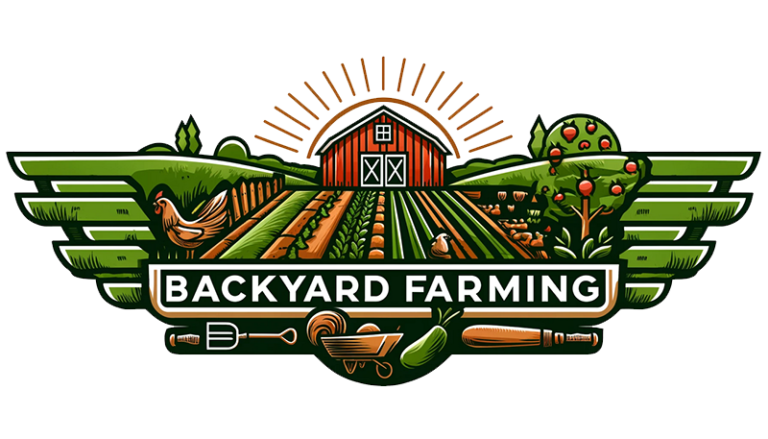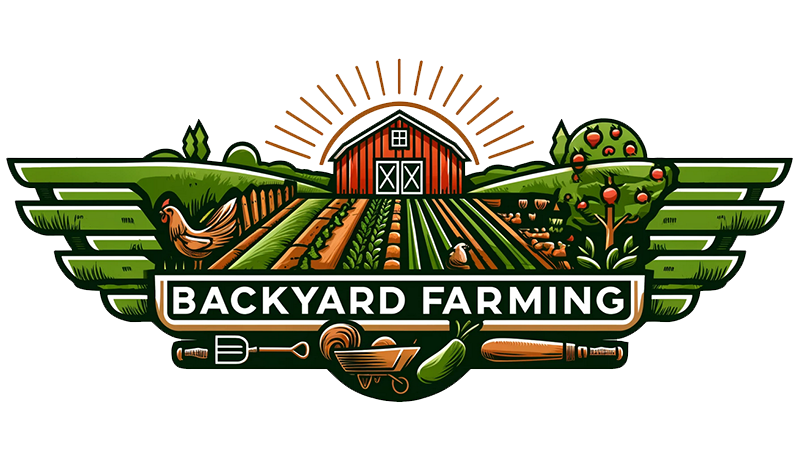Welcome to Backyard Farming Life, where we provide you with the knowledge and tools to transform your backyard into a sustainable and thriving homestead. In this comprehensive guide, we will explore the benefits of backyard homesteading, how to get started, various techniques, as well as the challenges and solutions. If you’re ready to embrace a more self-sufficient lifestyle and enjoy the rewards of sustainable living, then let’s dive in!
Benefits of Backyard Homesteading
1. Sustainable Living
Backyard homesteading is more than just a hobby; it’s a lifestyle that promotes sustainable living in various ways:
- Resource Conservation: By growing your own food and utilizing natural resources, you reduce the consumption of energy and materials required for commercial food production and distribution.
- Environmental Impact: The use of sustainable agricultural practices such as organic gardening minimizes the release of harmful chemicals into the environment, contributing to soil and water conservation.
- Self-Sufficiency: By becoming less reliant on outside sources for food and resources, backyard homesteaders actively contribute to a more sustainable and self-sufficient community.
Furthermore, embracing sustainable living through backyard homesteading fosters a deeper connection with the environment, encourages biodiversity, and sets an example for future generations to prioritize sustainability in their lifestyles.
2. Health Benefits
Engaging in backyard homesteading offers a multitude of health benefits that contribute to overall well-being. Here are some of the key advantages:
- Physical Fitness: The hands-on work involved in maintaining a homestead, such as planting, weeding, and harvesting, provides an effective form of physical exercise. This regular activity promotes cardiovascular health and strengthens muscles.
- Nutrient-Rich Foods: Homegrown produce is rich in essential nutrients, vitamins, and minerals, offering a significant boost to one’s diet. The consumption of fresh fruits and vegetables contributes to a strong immune system and supports optimal health.
- Stress Reduction: Engaging in homesteading activities, such as gardening and animal care, has been shown to reduce stress and promote mental well-being. The therapeutic aspects of spending time outdoors and connecting with nature can have a positive impact on overall mental health.
- Chemical-free Eating: By growing food without the use of harmful chemicals, individuals can enjoy a diet free from pesticides, herbicides, and synthetic fertilizers. This promotes a cleaner, toxin-free lifestyle that supports long-term health.
- Community Interaction: Building connections with other homesteaders and sharing experiences fosters a sense of community. Social interaction and support can contribute to emotional well-being and a sense of belonging.
3. Environmental Impact
By implementing sustainable practices and environmentally friendly techniques, backyard homesteading positively impacts the local environment. Reduced reliance on industrial farming methods helps conserve natural resources and encourages biodiversity within the community.
Getting Started with Backyard Homesteading
1. Choosing the Right Location
When it comes to backyard homesteading, the location of your homestead plays a pivotal role in the overall success of your agricultural endeavors. Selecting the right location involves careful consideration of several crucial factors that directly impact the productivity and sustainability of your homestead. Let’s delve into the important aspects to contemplate when choosing the perfect location for your homestead:
- Sunlight Exposure: Adequate sunlight exposure is paramount for the prosperity of a backyard homestead. It is particularly essential if you intend to cultivate a thriving vegetable garden. Assessing the sunlight patterns throughout the day and across different seasons is crucial for optimizing plant growth and ensuring a bountiful harvest.
- Soil Quality: The quality and composition of the soil in your chosen location are vital determinants of its suitability for homesteading activities. Testing the soil for fertility, texture, and composition is imperative. Whether it’s sandy, loamy, or clay soil, each type has its distinct characteristics and requirements.
- Water Accessibility: The proximity to reliable water sources such as wells, ponds, or rivers is a critical consideration. Access to water is indispensable for various homesteading requirements, including irrigation, ensuring an adequate supply of drinking water for animals, and maintaining a flourishing garden.
- Climate Considerations: Local climate patterns, encompassing temperature fluctuations, precipitation levels, and potential weather hazards, significantly influence the suitability of a location for homesteading.
- Land Accessibility: Ease of accessibility to the chosen location is another pivotal factor to consider. Ensuring convenient transportation of materials, supplies, and harvested produce to and from your homestead is essential for the efficient management and productivity of your backyard homestead.
2. Planning Your Homestead
Effective planning plays a crucial role in the success of your homestead. Develop a comprehensive plan that outlines your goals, the types of plants and animals you intend to nurture, and the sustainable practices you aim to incorporate. This will serve as a roadmap for your backyard homesteading journey.
3. Selecting Plants and Animals
When selecting plants and animals for your backyard homestead, it’s crucial to take into account the specific requirements of your local climate. Look for varieties that are well-suited to the temperature, soil type, and precipitation patterns in your area. Additionally, prioritize species that offer high nutritional value to support both your family’s dietary needs and the natural ecosystem of your homestead.
4. Sustainable Practices
When it comes to creating a thriving homestead in your backyard, implementing sustainable practices is crucial for the long-term health and productivity of your farm. Sustainable practices encompass a wide range of strategies that aim to minimize environmental impact and promote self-sufficiency. Let’s explore some key sustainable practices that can transform your backyard into a flourishing homestead:
- Water Conservation: Implementing water conservation techniques such as rainwater harvesting, drip irrigation, and mulching can significantly reduce water usage.
- Soil Health: Utilize organic fertilization methods such as composting and natural soil amendments to enrich the soil with essential nutrients.
- Natural Pest Management: Embrace natural alternatives to conventional pesticides, such as companion planting and beneficial insect habitat creation.
- Permaculture Principles: Integrating permaculture principles, such as polycultures and food forests, creates a self-sustaining ecosystem in your homestead.
Backyard Homesteading Techniques
1. Organic Gardening
Organic gardening, also known as sustainable gardening, is a holistic approach to cultivating plants that emphasizes the use of natural methods and materials to nurture the soil and support plant growth.
2. Composting
Composting is an essential practice in backyard homesteading, as it converts organic waste into nutrient-dense compost for improving soil fertility.
3. Rainwater Harvesting
Rainwater harvesting is an essential practice for homesteaders to efficiently collect and store rainwater for various beneficial purposes.
4. Seed Saving
Seed saving is a beneficial and sustainable practice where gardeners and farmers collect and preserve seeds from their best-performing plants for future cultivation.
Challenges and Solutions
1. Space Constraints
Backyard homesteading presents a unique set of challenges, particularly when it comes to space constraints. Making the most of limited space requires a combination of innovative solutions and strategic planning.
2. Pest and Disease Management
Effective pest and disease management is essential for maintaining the health of your homestead. Implementing natural pest control methods, crop rotation, and regular monitoring are key strategies for preventing and addressing potential issues without reliance on harmful chemicals.
3. Time Management
Effective time management is essential for maintaining a successful backyard homestead. Balancing the demands of caring for plants, animals, and infrastructure requires strategic planning and consistent effort.
Congratulations on completing this comprehensive guide to backyard homesteading! By embracing the principles of sustainability, self-sufficiency, and environmental stewardship, you are well on your way to transforming your backyard into a thriving homestead. We hope this resource has inspired you to embark on a rewarding journey of backyard farming, and we look forward to accompanying you every step of the way. Happy homesteading!

